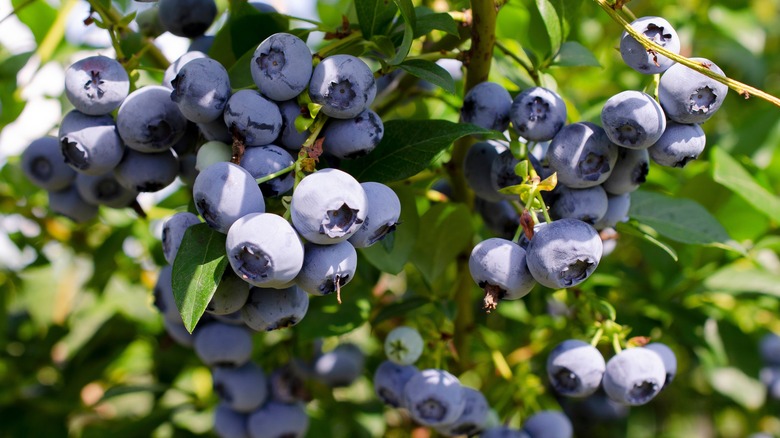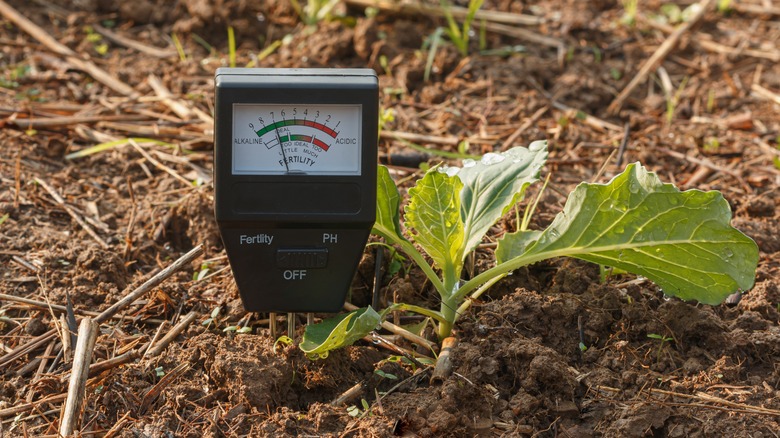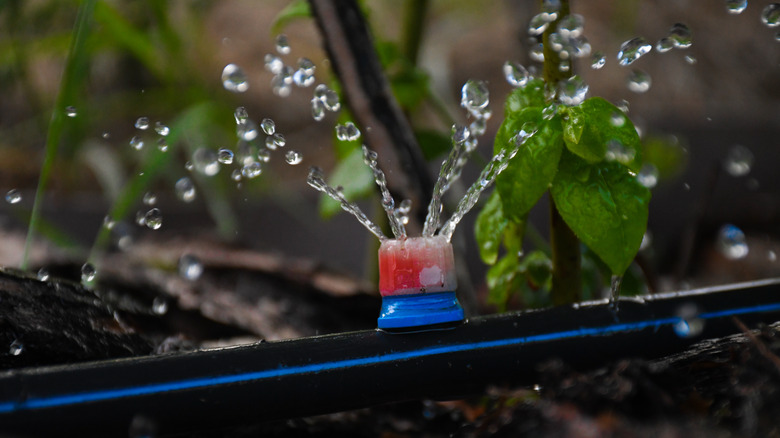The Biggest Mistakes You're Making When Growing Blueberry Bushes
Munching on homegrown, juicy blueberries (Vaccinium) is an absolute delight. Their ornamental gong-shaped white flowers and color-changing foliage make them a must-have in gardens. But growing these showy plants is a huge bother, given their restrictive growing conditions. They require full sun but mild summers, winter chills without frosts, good irrigation but are averse to clay soils, fertilization except in the first year... The journey to enjoying these superfoods can be arduous and riddled with mistakes. But the biggest mistake you're making when growing blueberry bushes is ignoring the soil's characteristics.
They thrive in well-draining, acidic soils — venturing outside their ideal pH range of 4.5 and 5.5 will leave you with discolored, pale foliage and slow-growing, small fruits. You'd think growing and caring for blueberry plants would be a breeze if you choose the hardiest variety for your USDA zone. Unfortunately, that isn't enough, and you might be staring at a multi-faceted problem. The reason? They produce better fruits with cross-pollination, and some cultivars lack self-fertilization, necessitating help. Failing to provide the prolific berry producers with adequate sun and water, especially when the fertilization timetable kicks in, are other follies.
Getting the soil right
Sitting shallow in the soil and lacking root hairs for resource uptake makes these indigo fruit bearers extremely susceptible to soil and water variations. The way out is to ensure the soil matches the plant's acidity and organic matter needs. Blueberry bushes seek acidic soils with a pH not exceeding 5.5. This means you should be on a constant lookout to take care of blueberry bushes, especially around concrete surfaces prone to lime leaching. For soils hovering between a pH of 5.5 and 6.0, elemental sulfur amendment around 6 to 8 inches deep works before the fall planting, but you should supplement with iron sulfate for more basic soils. However, don't go overboard, as highly acidic soils (under a pH of 4.5) can raise aluminum and manganese concentrations that are toxic to the ornamentals.
Amending the soil with compost is essential as blueberry plants require at least ⅓ of the soil volume topped with organic matter, unlike the under-2% normally present in gardens. Ideally, the topsoil should be amended with cover crops a year before plantation to improve the organic content, but if that's not possible, applying peat moss and (non-lime-containing) sand in a 1:1 ratio to every planting hole should suffice. Follow up with slightly decomposed, acidic mulches such as wood chips, pine bark, sawdust, and ground yard waste. Repeat the soil test every year or two for targeted treatments.
Avoiding other planting mistakes
With site selection sorted out, another mistake that gardeners often make is planting the same variety, mostly chosen based on its fruit size, taste, cold-hardiness, and productivity. A better method is to plant several varieties, preferably with successive blooming periods (with some overlap), to promote cross-fertilization, as this yields more and better fruit. Moreover, while most blueberry cultivars are self-compatible, some, like Spartan, Polaris, Legacy, Brigitta, and Aurora, aren't. So, you'll need to space two different varieties around 5 feet away to promote pollinator action.
Gardeners also stumble when it comes to sun exposure. Granted, these woody shrubs can tolerate some shade, but it comes at the price of the dusky blue fruits, which won't taste very sweet. So, ensure they receive six hours of direct light — this will aid your fight against diseases, too. Further, rework your irrigation schedule. Since younglings (aged under 3) aren't deeply entrenched in the ground, they require a weekly dose of 1.5 to 3 inches of water, preferably with drip sprinklers; the mature ones make do with lower amounts since they despise wet feet. Finally, deadhead at least 20% of the old growth, or the bushes will expend energy on maintaining it rather than producing bigger fruit.


